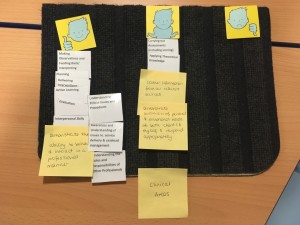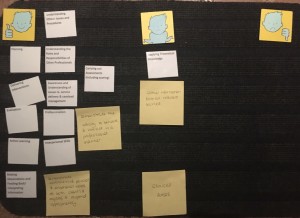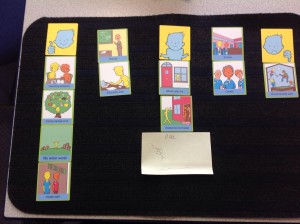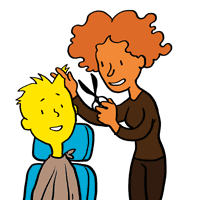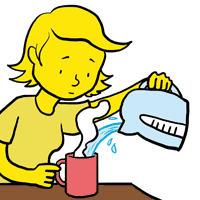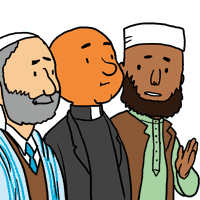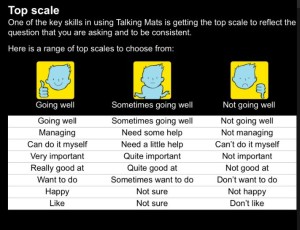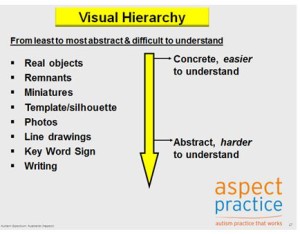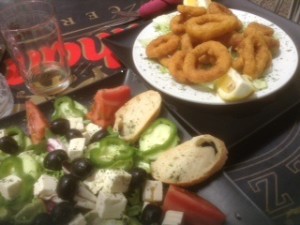Many thanks to Jenny Trott for our new guest blog about her interview with Talking Mats Director, Lois Cameron – Jenny’s video provides some great information about the Talking Mats approach and our original and digital resources:
A year ago I started my YouTube channel (www.youtube.com/jennytrott) as a way of supporting parents and carers with information and inspiration. As a parent of a disabled child myself I knew that one of the best ways to find out things is from other parents, and YouTube was just a different and new way to do that. To date I have published nearly 50 films about subjects ranging from Self Directed Support to Rebound therapy, and including interviews with parents, professionals and disabled people.
Quite early on I knew that I wanted to make a film about Talking Mats. I had used Talking Mats when I worked with people living with dementia, and I knew that my son’s school were using them too. I had seen the benefits of this innovative communication tool but I also knew that many parents and carers didn’t really understand it because they hadn’t been given the right information.
Lois was kind enough to agree to join me in front of the camera, so in April I visited Talking Mats in Stirling with my tripods, microphones and cameras. It can be a bit daunting interviewing someone I’ve not met before but Lois instantly put me at ease and had the great idea of demonstrating a Mat rather than just talking about it. It was so interesting, experiencing using a Mat first hand and it helped to show the viewers what Talking Mats is really about.
You can view the video here: https://youtu.be/Fmyt1fE-_U8
The feedback from the film has been great, both from professionals, parent carers and SLT students; lots of lightbulb moments; “ah, now I get it”!
I am still making films but less frequently as I am now also setting up a social enterprise, Mecoco (www.mecoco.org) here in North Ayrshire. We’ll be offering work experience and volunteering opportunities to disabled people to work alongside us making candles and melts. I am sure Talking Mats will be invaluable in our workshop!
If you’d like to find out more about accessing Talking Mats training take a look here- https://www.talkingmats.com/training/ – we offer a range of options including online, and bespoke training for organisations, as well as advanced courses and specialist seminars for those who have already accessed Talking Mats Foundation Training.
Here Laura Holmes, our North-West England Associate, describes how she used Talking Mats to support mid and end of placement reviews with a Speech and Language Therapy Student:
I am very familiar with using Talking Mats to help the children I work with to express their views and opinions – to give them a voice in terms of therapy planning and to enable the children to think about and share what works for them.
However I recently also used Talking Mats to support a Speech and Language Therapy student who was on placement with me. I introduced the approach to support our discussion during her mid-placement review, and then again, during the final review at the end of her placement.
I introduced a Talking Mat with the topic ‘Clinical Areas’ and the topline question ‘Confident/OK/ Not Confident’. I made up options relating to each clinical assessment area as described in the University Student Handbook/Guidelines.
Here is the mat from the student’s mid – placement review:
And here is the mat from the end of placement review:
The pictures help to show the shift in the student’s confidence from the mid-point of the placement in comparison to the end of the placement.
The first Talking Mat helped us to focus our discussions in terms of what skills needed further support/development during the placement. The second Talking Mat then supported our evaluation of current learning outcomes at the end of the placement, as well as helping to identify key learning outcomes for the student’s next placement.
The student shared that she found Talking Mats a really useful thinking tool to help her to think carefully about her skills and the progress she had made during the placement. This was easier than during a typical face-to-face discussion due to the focus on the mat. The interaction itself was also more relaxed as a result.
My next step will be to introduce use of symbols for topic and options – here are some examples from a Scotland-wide Talking Mats project which involved asking students about their work placements:
We often have members of University and College staff coming to our Foundation Training Courses – find out more about this and other training options we offer here:
https://www.talkingmats.com/training/
If you have any examples of using Talking Mats for student supervision, and would like to share them, it would be great to hear from you! Just email me at laura@talkingmats.com
In this latest blog, our Talking Mats OT Associate, Rachel Woolcomb tells us how Talking Mats can support delivery of Personalised Care:
“Person centred practice”, and “partnership approach” are common phrases heard in health and social care settings but what does this really mean in practice?
How good are we at ensuring our service users are truly heard, and given opportunities to talk about what is important to them?
Recently NHS England set out their ambitions for the delivery of personalised care. This is a commitment to enabling people to have the same choice and control over their mental and physical health that they have come to expect in every other part of their life.
This however requires a shift in culture.
One of the cornerstones of personalised care is shared decision making. This is a collaborative process in which people are supported to understand the options available to them including the various risks, benefits and consequences. A shared decision will have acknowledged personal preferences, circumstances, values and beliefs. This ensures that when a choice is made it is fully informed.
There is substantial literature which demonstrates the usefulness of goal setting as part of the communication and decision making process.
A well written person-centred goal will describe the anticipated achievement of a specific activity. It will be meaningful and help create a common vision within the rehabilitation process.
Talking Mats is an ideal tool to help facilitate these processes. They enable better conversations and provide an interactive thinking space. They have also been demonstrated to be a useful tool in enabling people to think about their rehabilitation goals.
Read more about this in the TMOT Resource 2: How Talking Mats can help facilitate shared decision making and goal setting: Goal setting TMOT 2
If you would like to find out more about the different Talking Mats training options we offer, take a look here: https://www.talkingmats.com/training/
In this latest blog, Laura Holmes (Talking Mats Associate based in Stockport) shares a great example of how Talking Mats can be used by education staff to help children to share their thoughts and feelings:
One of Teaching Assistants I work with at Woodley Primary School in Stockport, Lucie Porteus, attended Talking Mats Foundation Training in December 2018. Since then Lucie has been using Talking Mats with many of the children on our Speech and Language Therapy caseload in school.
Lucie’s use of Talking Mats with a group of Year 6 children is a great example of the benefits of using Talking Mats to help children to share their views and opinions. Lucie had carried out initial Talking Mats sessions with four children, on a one-to-one basis. These sessions had focused on getting a general idea of each child’s thoughts and feelings using the Talking Mats ‘Consulting Children and Young People’ resources. A common theme had emerged through use of ‘blanks’ – all four children wanted to talk more about their upcoming school residential trip. Here is a picture of one of the mats (click on the picture for a clearer view):
Lucie then planned and prepared options to ‘sub-mat’ the topic ‘PGL’ – the residential school trip, and chose the topline questions ‘happy about/not sure/ not happy about’. She then met with each child individually to complete the mats. Some of the issues/ questions which emerged from the mats were:
- ‘I don’t know who the people there are’/ meeting new people
- ‘I don’t know what we will be doing’
- ‘Do we have a choice about what activities we can or can’t do?’/ ‘I’d like to have a choice’.
- Privacy – getting dressed
- Will any instructions be written down – do we just listen or will we be shown what to do?
- The instructions might be confusing – what will I do?
- I don’t like heights – I’m worried about climbing up high
- Working in groups – we might all fall out
- Sleeping – it might be hard to get to sleep. Sometimes other children talk and I can’t get to sleep.
- What will the food be like?
- What happens if I don’t feel well?
- The journey – I might feel sick if I’m not at the front of the coach/ Do we get to choose who we sit with?
This information was passed on to each child’s Class Teacher and Teaching Assistant. Further conversations then took place to answer/address the above queries and concerns. Using Talking Mats meant that these conversations were personalised and focused. The children’s queries/concerns were listened and responded to well before the school trip itself.
School staff report that all the children had a fantastic time on their school trip!
Talking Mats enabled these children to have their voices heard about a topic which was really important to them. If you are interested in finding out more about accessing training to enable you to support the children and young people you work with to have their voices heard, take a look at our training options here: https://www.talkingmats.com/training/
We are always very grateful for comments and suggestions about our resources, so have been listening to our customers and working to upgrade the Talking Mats Health and Well-being resource and the 4 digital resources.
There are several additions which apply to both the original and the digital versions of Health and Well-being.
- Originally we had asked our artist not to put clothes on the characters to try to make them culturally neutral but following a number of comments – (in particular the bare hairdresser who caused much amusement!) – our artist has added clothes on those symbols where the character was obviously naked.
- Next we have included additional relevant symbols and altered others to make the resource more comprehensive.
Our App developer has also been working to incorporate all of the above features into the digital version. He has included a more comprehensive list of wording for the top scale. (Click on the image to enlarge)
He has also added a feature which lets you toggle the wording for the top scale on and off; he has sorted the split words under the symbols and he has improved how the final record of the Talking Mats is displayed in the email sent.
Finally we are delighted to announce that our 4 main Talking Mats resources have been developed in German for the Digital version in collaboration with Professor Norina Lauer at the University of Idstein. All 4 resources – Health and Well-being, Children and Young People, Eating and Drinking and Social Care will all be available on the App by clicking on the German flag in the opening page.
The German version is not available in the original hard copy but you can order the resources with no words to allow you to add your own.
The upgrades to the digital will happen automatically in the next few weeks at no extra cost and if you would like the hard copy sets to upgrade your original resources, you can order them from us at a reduced cost. 2017-18 Additional Symbols Post Training Order form
Thanks again for your feedback – keep the comments coming!
We have received a number of requests to create a guide to adding your own images and creating submats with Digital Talking Mats and this blog will show you how.
One of the features of Talking Mats is that we have developed a number of different symbol resources based on our research and clinical practice which cover a wide range of topics.
However, sometimes you may want to personalise what is being communicated about by adding your own images. You may also want to create a submat to explore an existing topic in more detail or you may want to create a completely new topic. In our training courses we explain how to do this when using the original Talking Mats.
However more and more people are now using the digital version of Talking Mats. In a previous blog we described how to add your own photos to the Digital Talking Mats.
We have now made a guide to help those who have the digital version to both add their own images and to create a submat with an example of a sub-mat with the topic “office”.
Download the following pdf to find out how to do it. dtm-a-guide-how-to-add-photos
We would love to hear any stories about making your own digital submats
We are very grateful to Tom Tutton from Autism Spectrum Australia for this interesting blog.
Autism Spectrum Australia (Aspect) works with people on the autism spectrum and their families. We regularly recommend visual communication strategies because people on the spectrum often have strengths in visual learning. This is especially important in our work through Aspect Positive Behaviour Support where communication can replace challenging behaviour.
In the past, we applied a ‘hierarchy’ of visual representations based on how easily they can be understood.
Generally, objects are considered the easiest form of visual communication to understand; followed by miniatures, remnants, photos, line drawings and symbols and writing, in that order. Although this hierarchical understanding is held true for many people on the spectrum, there can be exceptions. Some individuals find line drawings easier to understand than photographs.
Aspect Practice continually reviews and applies the evidence base to our daily work. So, with the knowledge that the hierarchy does not fit for some people, we reviewed the research literature to see if we could refine our understanding and use of visual communication strategies.
We asked “What evidence is available about the hierarchy of visual representation which could explain how an individual could benefit more from line drawing supports than photos?”
To find the answer, we searched an electronic research database, prioritised 20 papers and then reviewed four papers in detail that seemed to answer our question (references below).
We found information that suggests the factors contributing to a person’s understanding of visual symbols is broader than a simple hierarchy and involves consideration of three main areas:
The individual’s experience
- The individual’s ability to learn
- ‘Iconicity’ of the symbol (more detail about this piece of terminology below)
Ideally, these factors should be considered for every symbol used with every individual. We learned that a symbol can be placed on a continuum in terms of ‘iconicity’. At one end, it can be described as “iconic” or “transparent”, meaning that it is very similar to the object it refers to (e.g. using a juice bottle to present the choice of juice). At the other end, it can be described as “arbitrary” or “opaque”, meaning that there is little or no visual similarity between the real item and the symbol (e.g. the written word “bird” does not look or sound anything like an actual bird).
The generally accepted hierarchy of visual representations aims to organise types of symbols by their level of iconicity, but misses some subtleties. This means that phrases such as “photos are easier to understand than line drawings” are often overgeneralisations.
For example, image 1 looks more like an apple than image 2, even though the second one a photograph. Image 1 would also be easier for an individual to understand if that symbol had been used extensively around them, if it was motivating and functional and if that individual had a strong ability to learn the association of that symbol and an actual apple. Therefore, a person’s ability to understand a symbol does not depend on its iconicity alone, but the ways symbols are used and learned.
In answer to our question, there are several possible explanations why a person may understand line drawings better than photos.
They may have been exposed to line drawings more than photos, meaning they can learn the associations between line drawings and things in the real world more effectively.
- The photos being used contained a background (and had lower ‘iconicity’), whereas the line drawings provided a simple representation on a plain white background.
- The person’s learning style may mean they learn each symbol individually, rather than learning how to associate symbols the real objects in a more general way. If a person who learns this way is exposed to more line drawings, they will learn more through line drawings.
As a general statement, it is clear that greater emphasis needs to be placed on the needs of the individual, as well as the properties of the individual symbol, rather than considering only a hierarchy.
Steve Davies (Positive Behaviour Support Specialist & Speech Pathologist, Aspect Therapy)
Dr Tom Tutton (National Manager, Aspect Practice, Positive Behaviour Support Specialist)
References
- Fuller, Lloyd & Schlosser (1992) Further Development of an Augmentative and Alternative Communication Symbol Taxonomy, AAC Augmentative and Alternative Communication, pp67-74
- Sevik & Romski (1986) Representational Matching Skills of Persons with Severe Mental Retardation, AAC Augmentative and Alternative Communication, pp160-164
- Stephenson & Linfoot (1996) Pictures as Communication Symbols for Students with Severe Intellectual Disability, AAC Augmentative and Alternative Communication, pp244-256
- Dixon, L. S., (1981) A functional analysis of photo-object matching skills of severely retarded adolescents, Journal of Applied Behaviour Analysis, 14, pp465-478
This article was inspired by a blog post written by Dr Joan Murphy, Co-Director, Talking Mats.
Click here to read original blog
Aspect Practice is an initiative where Aspect shares its evidence based practice through information, workshops and consultancies. To learn more about Aspect Practice, visit www.autismspectrum.org.au/content/aspect-practice.
We were recently involved in a discussion about the merits of symbols versus photographs to support communication, a topic which we have spent some time considering over the past few years.
We have also found an excellent small book titled ‘Too late to drive’ by Helen J Bate and published by Pictures to Share C.I.C. In it Helen discusses the meaning of pictures and visual perception in relation to dementia. There are some excellent quotes such as ‘Recognition is not the same as relevance, and relevance is what is important to us when we have dementia’ and ‘The images that really talk to people are produced with a skill and an understanding of the visual image as a method of unspoken communication’..
Our gut feeling is that for many people who use Talking Mats (who we refer to as ‘thinkers’), symbols may be more helpful than photographs and, although we have not carried out any academic research, we have lots of anecdotal evidence from a number of practitioners about some of the pitfalls of using photos. Here are a few:
- The ‘thinker’ tends to get caught up in the detail of a photo e.g. Australian colleagues told us about using photos of different rooms in a day centre but the ‘service users’ got caught up with seeing specific details in the photos rather than considering the over place
- Sometimes a photo can be too specific e.g. we were told of a person with dementia who was shown a photo of cornflakes to represent breakfast but could only focus on the cornflakes
- The ‘thinker’ may be distracted by a photo of a real object e.g a person with learning disability fixed on the make of a particular car instead of considering transport
- We are always wary of using photos of real people as it may be too sensitive for the ‘thinker’ – symbols appear to reduce the emotion impact of the image and be easier for people to comment on
- If the person in the photo has changed, for example their hairstyle or glasses, this can confuse the ‘thinker’
- If the ‘thinker’ has been involved in the place or event in the photo this can affect their views whereas a symbol is more neutral
- Sometimes the clarity and quality of home taken photos can be poor.
- Commercial photos like Photosymbols are good quality but we are aware that they tend to be used repeatedly, sometimes for quite different meanings
Here is a link to a previous blog which gives some additional information about the development of the Talking Mats symbols.
Academic research evidence on visual images and communication is limited and Helen suggests that that ‘If the academic world wants to explore or challenge anything [in these pages] then at least the conversation has begun’. We would welcome any further information, references or comments.
Please send them to info@talkingmats.com
Many of you have requested the ability to add your own photos into the digital Talking Mat.The new version of the app allows you to do just that.
It is a great feature particularly, if you want to reflect on a particular activity like a day out or a holiday. I thought I would try it when I returned from my recent holiday in Spain . You can see I had a great time the only one downside was the flight (as for some strange reason my husband, Jon and I were not placed in adjacent seats) . I placed shopping in the middle (I might have done a little bit more but I know it’s not really Jon’s cup of tea so I restrained myself!). However there were lots of things I loved, seeing my son in his new apartment in Madrid was great, the walking in the Sierra Nevada stunning, though did involve a lot of up and down ! and Grenada, well, the Alhambra has always been somewhere I wanted to visit and it did not disappoint.
I know that in Talking Mats we have always been slightly cautious about the use of photos but I think where places are concerned and where the photos relate to the immediate experience of the person then they can be really helpful. However, I also think the difference in the image ‘going out for a drink’ and ‘meals out’ demonstrates clearly the pitfall of photos. In the ‘meals out’ photo that I took there is too much visual information and without the written caption you probably would struggle to guess what that photo means. The symbol of ‘going for a drink’ is much clearer and will work for lots of ‘going out for a drink’ situations.There is an additional risk that that the photo of my ‘meals out’ that I took becomes too specific to that particular meal rather than mean ‘meals out’ throughout the holiday if I had taken a photo of a more generic plate of food that might lessen that risk.
Maybe I should have used this photo!
Adding images from your camera roll is an easy feature to use. After you have selected your thinker and added a new session you get to the ‘session set up’ page. There is a button on the top left hand page that says ‘Add local image file’ click this and go to your camera roll. Select the image and type the caption. you can select as many images as you need. The images will then appear after the blanks when you carry out the Talking Mats session with your thinker.
I think this new feature of being able to add your own images means that you could use the Talking Mats in really creative ways. It would be a great way to reflect on a trip e.g. schools could use the photos to talk to the children about their experience of a particularly outing. This could be the basis of a great group discussion projected onto a white board. It could enable people to reflect and express their views on all type of experiences e.g. transitions, work experience, going to college, where to live, visiting their health centre etc.
If you already have the digital pro you will get a free upgrade to include this feature. If you don’t have the digital pro version and want it click here to buy
Thanks to Helen Beltran for this thought provoking blog.
I am an Accredited Talking Mats Trainer and have just finished a great week of training in my local area, Inverclyde, Scotland. This was the first time I had given out symbol sets to everyone who completed the training. What difference did it make?
Everyone was able to see the symbol sets during the training and was really positive about the images and the design. I was concerned at the time that this would stop them really engaging with the process and individualising their mat. I was so pleased when they came back with videos that showed that they had selected the most appropriate options for their communication partner, they had removed those that were too abstract, they had thought about using photos, they had added symbols they had produced themselves. They had made the resources their own!
We talked about this as a group and all the participants felt that the symbol sets were going to allow them to get going with Talking Mats. They would then develop their bank of symbols, by making their own and buying further packs. Some participants told us that they felt having the symbol sets was allowing them to bring supportive colleagues on board who had not yet done the training and was combatting the negative attitudes of the vocal few who had the ‘not more work for us to do’ attitude!
They left with their symbol sets – full of ideas, not just about Talking Mats but about offering choice, hearing the individual’s voice, reducing vulnerability, relationship building and empowerment.
It has often struck me that some people are very much at home making picture resources and making their communication more visual, while others find it a real challenge. Is it reasonable for us to expect everyone to produce their own resources from scratch? Is the barrier to the use of visual communication the making of the resources, rather than the motivation to use them? On the other hand, is the making of the resources the only way to make sure that the supports meet the individual’s needs? What about the costs involved in buying in? Do those who are embracing visual communication need help with resources in order to spread good practice?
Food for thought?
 Online training login
Online training login 

